France in Focus
Join us as we turn the spotlight on our closest neighbour, France, and its many wonders, from shining cities (Bordeaux shown above) to peaceful countryside and striking coastlines.
This is a feature from Issue 20 of Charitable Traveller Magazine.
France is having a moment. A year-long moment, as 2024 is packed with big events and anniversaries. Top of the agenda is Paris hosting the Olympics and the Paralympics this summer, but also vying for attention is the 80th anniversary of the D-Day landings in Normandy and the 150th anniversary of the birth of the impressionist art movement.
Expect a visual feast at every location that inspired this influential group – the port of Le Harve and the gardens of Giverny, both in Normandy, for Monet, the island of Chatou near Paris for Renoir (and others), and Sainte-Victoire mountain in Provence for Cézanne. But what of the rest of the country? France – the second most popular destination for Brits to visit on holiday after Spain – is over twice the size of the UK yet with a similarly sized population, so there’s a lot of space to explore.
Avoid the millions queuing to climb the Eiffel Tower and instead consider visiting some of the lesser-known corners of the country. Make the most of the €49 summer rail pass launching this year and travel to Nîmes to see Maison Carrée, a Roman temple built in the 1st century AD, or to Toulouse and the newly transformed Halles de la Cartoucherie full of local food suppliers.
Try some slow tourism either cycling some of the country’s 20,000km of cycle routes (the Vélodyssée, Vélomaritime and Loire a Vélo), navigating Europe’s largest river network (no licence is required to rent a barge or houseboat), or following the nature trail on Ile St-Aubin to the north of Angers. Escape to national parks, mountains and forests – the newest addition is the Forêts National Park in Burgundy, home to 50 million trees and 200km of hiking trails. Read on to discover more of France this year.
Bordeaux Does it Better
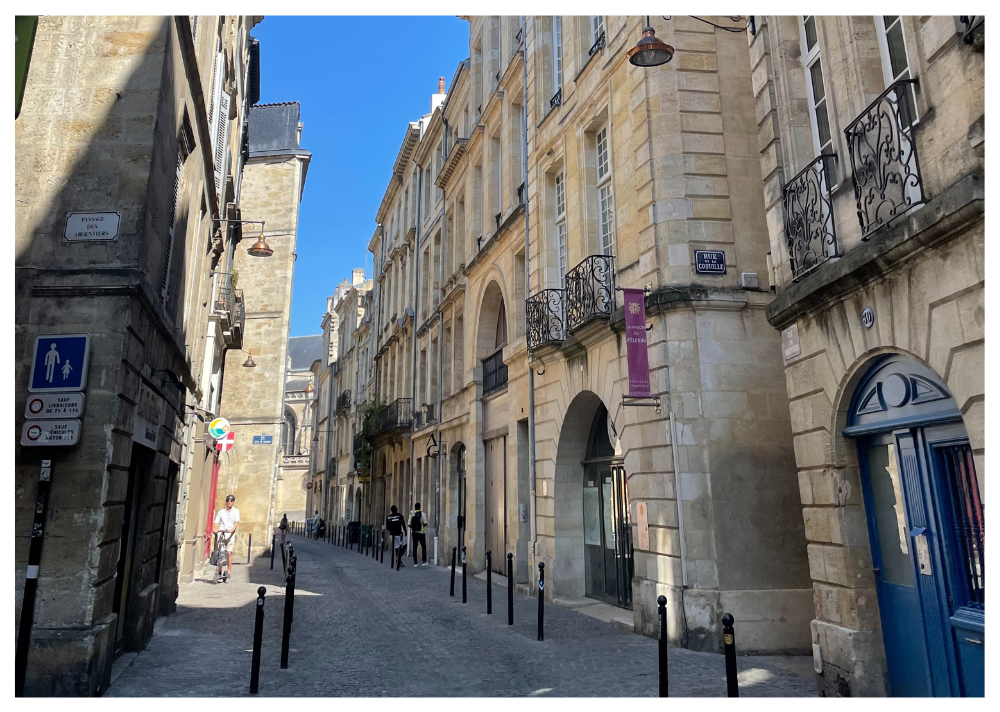
Famed for it's surrounding vineyards, Bordeaux has a prized eco-consciousness and makes for a restorative weekend away, says Rebeca Miles
“At Darwin, everything must be perfect,” says our Bordeaux guide Fred Bechir. It’s a high bar, but one that the urban enclave, and to an extent the whole city, seems happy to strive for.
Voted the greenest city in France in 2023 by Le Parisien daily newspaper, Bordeaux’s mayor Pierre Hurmic says there’s still a long way for the city to go, but as a visitor for a long weekend, there are more than enough positive signs. We (my husband and seven-year-old daughter) arrive in Bordeaux by speedy TGV direct from Paris.
The journey is just two hours and Bordeaux is the first stop. From the central train station, we hop on a tram and check into our hotel, the Grand Hôtel Français, 25 minutes later. The tram network makes it easy to get around the city and run on green electricity, and Bordeaux has also had a self-service bike hire scheme, the V3, since 2010. Our hotel is one of several in the city with a Clef Verte (Green Key) label to mark its eco credentials. Yet the Grand Hôtel Français has been leading the way in Bordeaux – it obtained the European Ecolabel back in 2010, which its director, Julien Kiefer, says made it a pioneer.
Walk and Talk
Set in an elegant building within the pedestrianised old quarter, it’s a convenient base, moments from many of Bordeaux’s landmarks, including the Grand Théâtre and Porte Cailhau, an elaborate old city gate. While the hotel has plenty of green credentials making a difference behind the scenes, it’s at breakfast that we most notice its impact, with much of the buffet being organic and/or free trade.
Fuelled on pastries, yoghurts, fruit and cold meats, we’re set for the day. When I last visited Bordeaux, it was November 20 years ago with a couple of friends, and we spent most of our time eating and drinking in Bordeaux’s many, many wine bars and bistros. This time, it’s summer, and we’re here as a family, so we need to mix things up a bit, and our guide Fred does just that. Walking us around the city centre, he’s adept at sharing stories we all find interesting – be it the important role Bordeaux’s women played in the French Revolution (for me) or the secrets behind Bordeaux’s sweet cannelé treats (my daughter). And it’s how we find ourselves hanging
out at Darwin, an urban ecosystem created in a former military barracks on the right bank at Bastide.
In many ways, it is indeed ‘perfect’. Its large cafeteria, the Magasin Général, serves delicious pizzas and an eclectic menu of largely vegetarian and locally sourced food, and there’s an on-site bakery, skate park and chocolate factory. The whole concept is zero waste and minimal impact, so for example there isn’t any air-conditioning. Instead, good ventilation and seeking solace within the old stone walls provide some cool air, and we amuse ourselves with some old-school entertainment, including table football, pinball and giant connect four over cold beers brewed on site.
Much of Darwin’s profits are put towards supporting refugees and providing them with somewhere to live when they first arrive in France, which the team here are doing in the grounds by converting former camping chalets rescued from Cap Ferret into small homes and providing jobs in the kitchens.
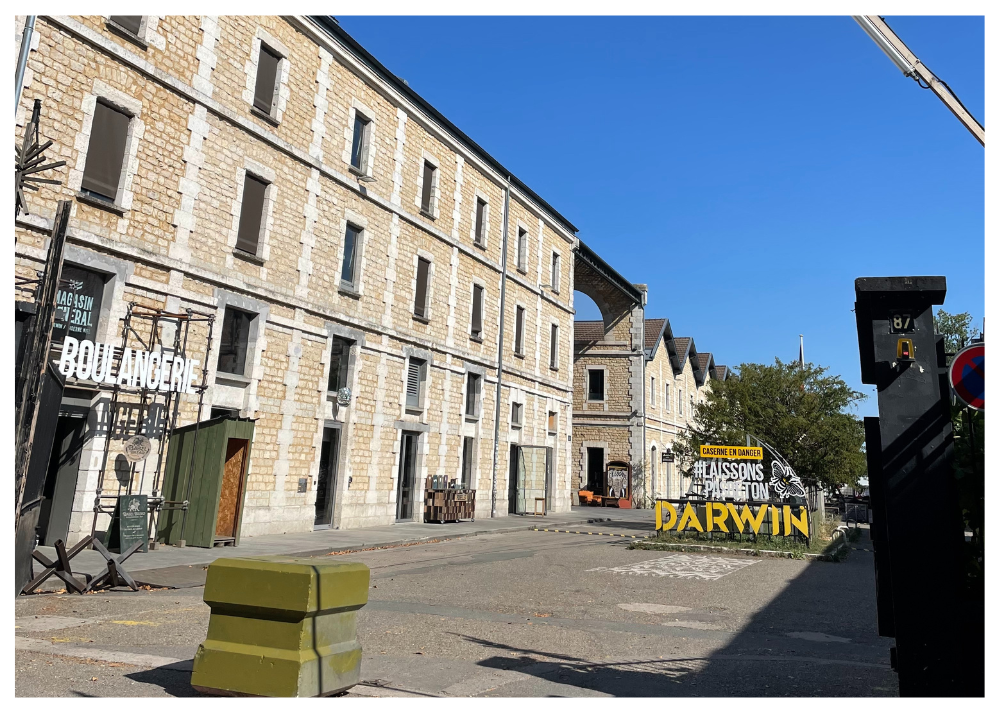
We see another side of Bordeaux on a fishing trip with Jean-Marie Hauchecorne, “the best fisherman in Bordeaux, because I’m the only fisherman in Bordeaux!” he jokes. Previously a CEO, he retrained four years ago as a freshwater fisherman and now spends his time tending to his shrimp pots sunk in the river and supplying Bordeaux’s restaurants with sustainably caught fish.
Together with us and another French family, he takes us out in his tender to inspect the day’s catch of freshwater crevettes, eels and catfish, which are all in abundance here. Despite this, there are strict regulations on eel fishing and he returns about 70 per cent of the eels he catches; the rest he can sell to local restaurants.
For us passengers, he whips out a gas-powered camping grill and throws on the crevettes, with some salt and foraged fennel. They char quickly, turning white, and he encourages us to eat them whole. The French family on board had the foresight to bring along a chilled bottle of white wine (and apple juice for the children), and Jean-Marie moors up in a shady spot under a bridge while we tuck into the most sustainable and delicious snack going.
We see another side of Bordeaux on a fishing trip with Jean-Marie Hauchecorne,"The best fisherman in Bordeaux, because I'm the only fisherman in Bordeaux!" he jokes

While this trip to Bordeaux may be very different to my time here many years ago, we still manage to eat and drink well, and the restaurant scene is refreshingly contemporary. From the over 3,000 places to eat in the city, we opt for Restaurant le Ganache, Casa Gaïa and Darwin’s Magasin Général, with each serving its own take on seasonal, local produce. A highlight is the falafels in a nutty sauce at Casa Gaïa in the Chartrons area of Bordeaux, a maze of old streets full of food shops, bars and markets.
As for my daughter’s highlights, she’s very happy having a turn on the huge Ferris wheel in the Place des Quinconces, especially at night with the lights twinkling across the city, and splashing in the vast Miroir d’Eau, a shimmering pool of water fountains on the riverbank at Place de la Bourse. It turns out Fred wasn’t just right about Darwin being perfect, the whole city is spot on for us.
Vive la Vilaine
A boat trip in Brittany delivers more than just memories for Ali Nicholls
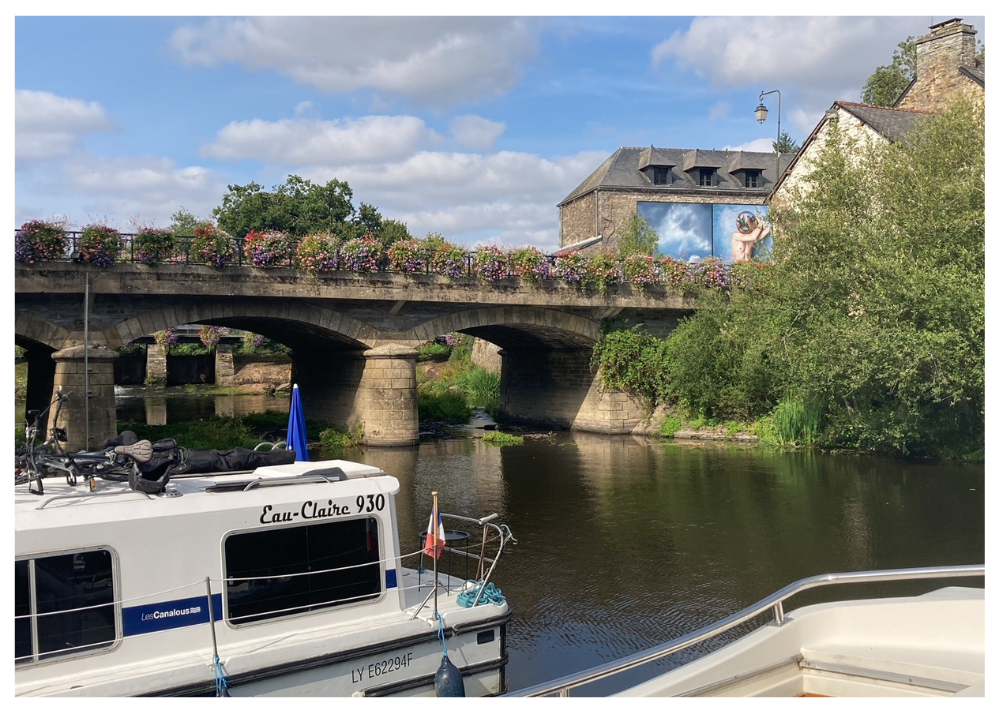
I still remember the decadence of dipping my baguette into a deep bowl of sweet, steaming hot chocolate – and I still have the bowl. That trip was the start of my passion for travel and being immersed in new culture, foods and history.
My partner’s parents retired from the UK to a beautiful area near Saint Malo 10 years ago, so we have visited many times and I adore exploring this area with its stunning coastline. The region is known as Côtes d’Armor, from the French côtes meaning coast and ar mor is the sea in Breton (and Welsh, incidentally).
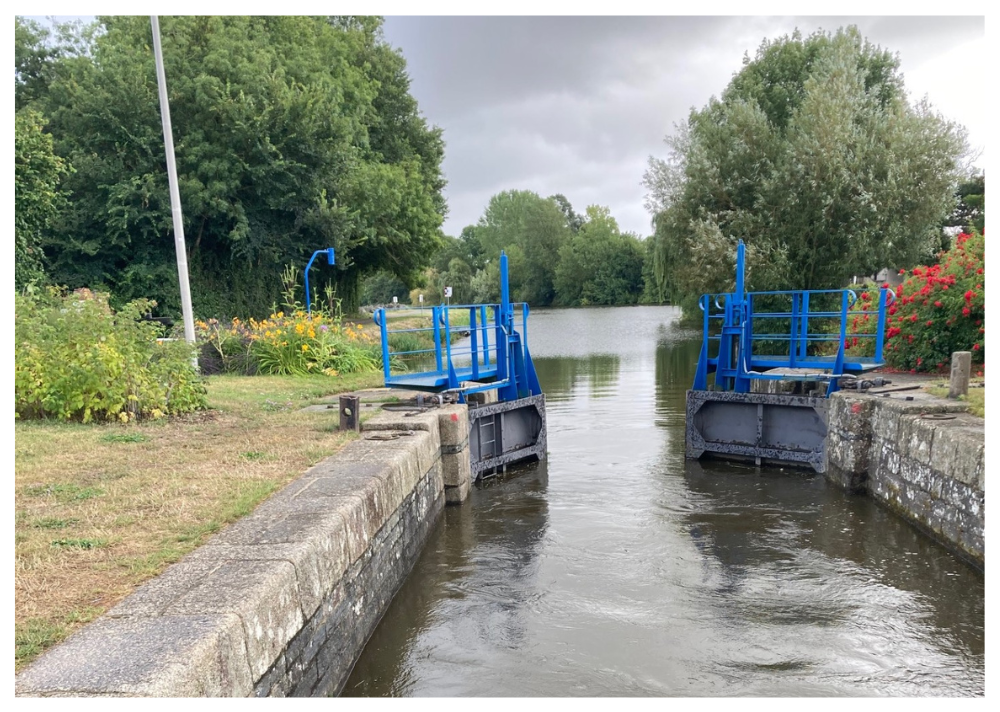
Over the years we have walked along many of the incredible beaches in all seasons and I never tire of revisiting our favourites – Saint Lunaire, Lancieux, Saint Briac sur Mer, Saint Cast le Guildo – and the most local to our house is the wonderful Saint Jacut de la Mer, a quaint village with seven beautiful sandy coves.
When we’re not walking on the beach we like to visit the town of Dinan, on the River Rance. Filled with medieval architecture and narrow cobbled streets, we meander down the steep hill to the harbour (imagining the effort it took to bring the supplies up the hill from the docked boats hundreds of years ago), and either relax in one of the waterfront cafes or hire an electric boat or canoe and mess around on the water.
Rest and Restore
So after a tough nine months caring for my elderly in-laws, we decided to further indulge our love of water and booked a trip with Le Boat to explore more of the French waterways. From its base in Messac, just south of Rennes on the River Vilaine, we met the fabulous Francois and Laetitia and their team, who helped us settle into what would be our floating home for the next three nights. Francois joined us to the first lock to show us the ropes both literally and figuratively, then we were on our own with only the birds and riverside creatures for company.
Our goal was to reach La Gacilly, approximately 25 kilometres to the west, as we’d only have to pass through six locks, all of which were either automatic or manned (by friendly lock keepers). This stretch of water was wonderfully quiet and spending our evenings on deck playing card games in the yellow glow of the lamps and candles was just what we needed to switch off from the world.
La Gacilly was a delightful town to turn around at. In June, it was bursting with flowers, and is home to many studios and workshops. Painters, sculptors, glass workers, jewellers and more display their wares along the streets, alongside France’s largest photography festival, which takes place annually from June to September. Created in 2004, it’s grown to welcome photographers from around the world displaying over 800 images, last year on the theme of nature’s legacy.
After a tough nine months caring for my elderly in-laws,we decided to further indulge our love of water and booked a trip with Le Boat to explore more waterways
La Gacilly and this trip will always hold special memories for me for an entirely more personal reason, as it was on this magical boating holiday that Tim proposed to me. Thanks to being on the water, we found a connection to nature and deepened our connection to each other. We laughed through sunshine and rain and at my many mishaps of my prowess as a deck hand being a little lacking. I mean, who jumps off the boat without taking the rope with them, overpowers their jump to almost land in the water the other side of the pontoon, or fails to save the boat hook falling off the deck?
Despite, or perhaps because of these mishaps, we can’t wait to book again and explore one of Le Boat’s six other itineraries in Brittany. I’m smitten.

Gliding on the Garonne
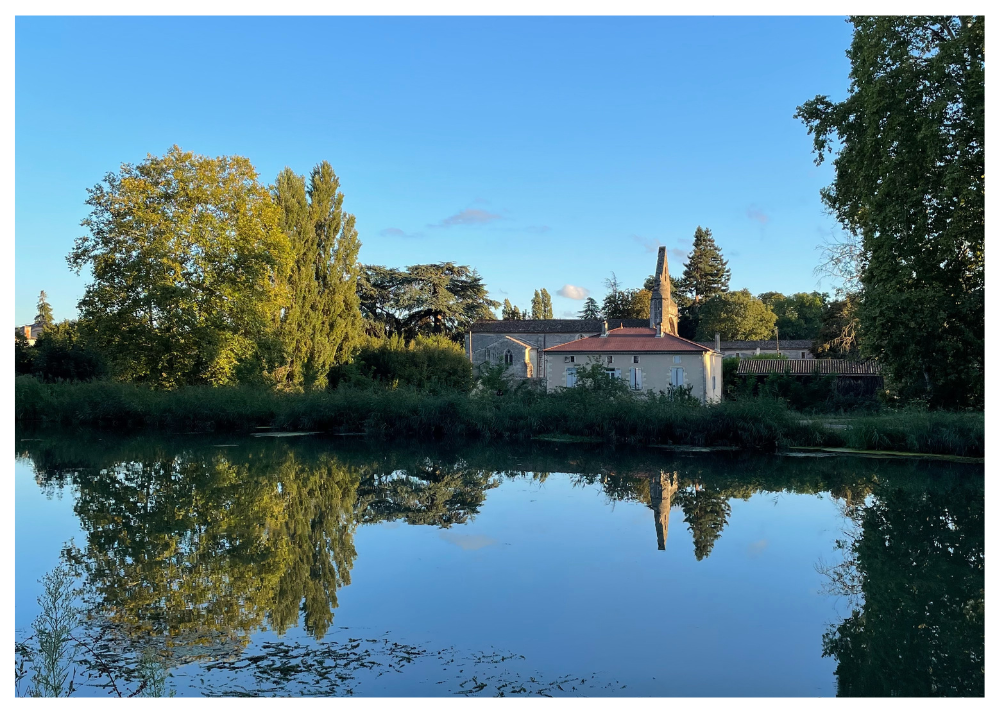
Boating through the Aquitane region is the most idyllic of family adventures for Rebeca Miles
“What’s ricochet mean mummy?” asks my seven-year-old daughter, as we bounce our boat into the lock, frantically turning the steering wheel and grateful for the large fenders protecting the worst of our blushes. It’s a good question; so far our line along the Canal de Garonne has been decidedly zig-zagged as we’ve try to get to grips with our hired floating home.
We – my husband Jon, daughter Evie and I – have hired a Cirrus B cruiser for three nights from Le Boat’s base at Le Mas d’Agenais, an hour’s drive south-east of Bordeaux in the Aquitaine region of France. It’s on the Canal de Garonne, which extends down to Toulouse where it becomes the more famous Canal de Midi – on this stretch it’s blissfully quiet with only the odd fisherman or cyclist around to witness our ineptitude.
Our Cirrus, a double cabin four-berth boat is, at 8.8m-long, the shortest boat in Le Boat’s fleet. Watching a fellow renter in a five-cabin Horizon try to execute a three-point turn that becomes a 10-point turn at the base, we’re very happy with our choice.
We’d been enlightened on the Cirrus’ nifty manoeuvrability, despite its sensitive steering, during our hour-long check-in with Francois and Philippe, two of Le Boat’s technicians. It was a relief to run through so thoroughly all we needed to know to not just live on the boat but drive it too, as en route to the base my husband and I both confessed to feeling a little nervous about being responsible for driving, docking, cooking and sleeping on a boat, something neither of us had done before.
Living near a canal, we’re both fascinated by life on the water and Le Boat’s assurances that no experience was needed to pilot one swayed us. The idea of gently cruising through the vineyard-heavy French countryside of one of the country’s most gastronomic regions seemed like the most blissful of ways to spend the last few days of the summer holidays, and we knew Evie would find life afloat fascinating too.
All Le Boat’s customers are given a detailed map of the waterway before they set off (as well as lots of other useful information), and Francois talked us through an itinerary for our three days afloat. Speed is limited to 8 knots on the canal – or about 14km/h, not accounting for navigating the many locks – so we knew we weren’t going to cover a huge distance, but he gave us two aims: a weekly night market with lots of local producers at Meilhan-sur-Garonne; and a highly recommended restaurant at the head of the canal, Ecluse 52. A third aim was in the back of my mind – we had a train home to catch at 10am on the final day, so we had to be back at the marina base the night before in order to make that.

I’m surprised by how much water we cover, and we make it to Meilhan-sur-Garonne in about four hours, feeling a bit giddy that we’ve been let loose and no one’s fallen in. Choosing to moor in a small marina on our first night, rather than tying up anywhere along the banks as is permitted, we’re guided into our berth by a friendly pair of retired teachers from Wales, who are crisscrossing France in their smartly restored Dutch barge.
The sun has set by the time we climb up into the village, and the market is decorated with long strings of festoon lights. Farmers are cooking lamb chops, duck breast and plenty more, wine makers are selling by the glass or bottle, and long tables are filled with people of every age enjoying a late summer evening while a band plays on a makeshift stage in the back of a lorry.
The following day, we set our sights on lunch at Ecluse 52, 18 kilometres away, and make it in time to grab one of their last tables surrounded by bright geraniums on the canal-side terrace. The food is worth the journey, and the three-course set menu at €18, including salmon risotto and a chocolate crème anglaise, is a steal.
I'm surprised by how much water we cover, and we make it to Meilhan-sur-Garonne in about four hours feeling a bit giddy that we've been let loose and no-one's fallen in
Getting the Hang of it
That evening, we tie up alongside the bank opposite the village church at Fontet. Each boat comes with two long metal stakes and a mallet, and we simply hammer them into the ground and tie the fore and aft ropes around, as Phillippe showed us. Triple-checking they’re secure, we relax for a peaceful night afloat.

And the ricocheting? It soon eases and we find ourselves looking forward to negotiating the locks. On the Canal de Garonne, they’re now automatic – there’s no longer the demand for lock keepers to guard each lock (how I’d love to buy one of those shuttered-up pastel-coloured lock keepers’ cottages). After Philippe helps us through the first lock next to the base before leaving us to fend for ourselves, we get the hang of activating the lock, running the lines around the mooring posts and pressing a button to open the gates.
We may only be afloat for three nights but the slow pace of life is addictive. Walking between the canal and the vineyards, under the dappled shade of the cedar trees with crickets and butterflies fluttering around my feet and the scent of camomile wafting around, I think I could get used to this way of life.
A Wonderland of Watersports
Normandy's coastline cleverly combines it's World War II history with some surprising activities, says Rebeca Miles
The situation takes a moment or two to dawn on me. What’s been described as a sea walk is literally that, a walk, in the sea – not next to the sea along the cliff tops or by the beach, but actually in the water, walking.
In the beach-side changing hut-come-club room of the Marche Aquatique Dieppoise, we don swimsuits and wet shoes and march down the pebbly beach. At about 5pm on a slightly overcast September afternoon, the English Channel doesn’t look that inviting and I wish I had a wet suit on. But Francoise, with her friends and fellow club members Patrice and Jean-Luc, are in their 60s and just in their swimmers and rash vests, so I don’t want to be put to shame.

I take a deep breath and wade in. The chill brings me out in goosebumps but seeing the joy spreading across the rest of the group’s faces convinces me to continue; once the water is up to my waist it’s okay, and I remember to breathe again. Francoise says it’s best to have the water level between our belly buttons and our nipples and to be walking on sand rather than pebbles, so that’s why, considering today’s tides, we’re walking in the late afternoon.
Socialising in the Sea
Francoise runs us through some warm-up stretches and demonstrates the ideal technique for walking through the water (leaning forward and leading with our knees), and we set off, walking parallel to the shore. The club is one of several that have opened along the Normandy coastline and really took off during COVID-19 as a legitimate social activity. They meet several times a week throughout the year and guests are always welcome; the New Year’s Day walk has become a high point of the local social calendar.
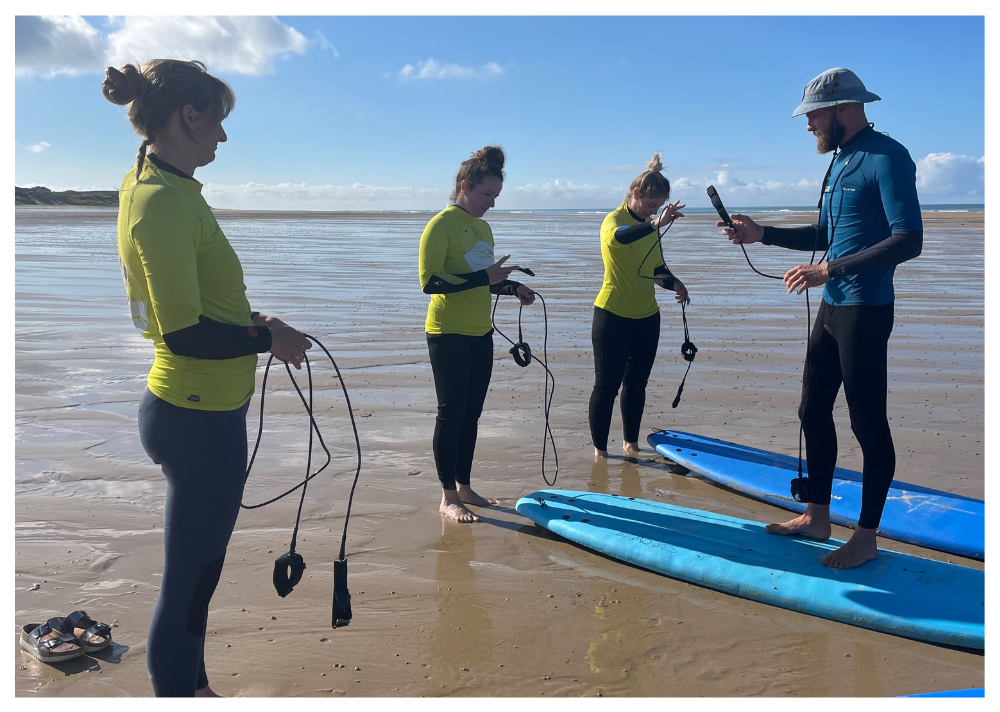
I’m here in Normandy to experience the huge variety of water sports that are available to holidaymakers along a stretch of coastline that is rightly more famously known for the D-Day landings (of which it’s the 80th anniversary this year). And while there are many poignant reminders and commemorations of WWII, Normandy is also a place of hope, beauty and tranquility.
To demonstrate how easy it is to reach this haven without flying, we take the four-hour DFDS ferry crossing as foot passengers from Newhaven to Dieppe, where we collect a hire car and stay overnight at the harbour-front La Tour aux Crabes Hotel and Spa. Towards the eastern end of Normandy’s nearly 400 miles of coastline, Dieppe, with its four ports and long stretch of beach, is a welcome gateway.
Here, the coastline has lots of white-chalk cliffs and dramatic headlands, under which we have a sunrise stand-up paddleboarding session at Pourville-sur-Mer the following day. Vincent, the owner of Surf’In Pourville, takes us out to sea, but it’s also possible to head inland for a more gentle adventure on the river Scie.
As we travel further west along the coast, passing Honfleur and Deauville, the beaches become more expansive and around Arromanches, famous for its role in the D-Day landings, conditions are perfect for some land sailing. Members of the Asnelles nautical club, to the west of Arromanches, regularly take to the hard-packed sands in these one-man sailing dinghies on wheels.
Our instructor, Helene, later reveals she’s European Champion so my speeds of 30km/hr or so are snails’ pace in comparison. Yet it’s exhilarating and easier to grasp the basics of than it looks, thanks to using your feet to steer, and tightening or loosening the main sail’s rope to gain speed or slow down, and our two-hour taster session whizzes past.
As we race back down the beach, out at sea are the remains of the Mulberry Harbour, a five-mile-long semicircular port that was hastily constructed in eight days for the D-Day landings. Much of its concrete mullions still remain, and it’s staggering to think that 2.5 million men, 500,000 vehicles and four million tonnes of supplies arrived via what was supposed to be only a temporary harbour.
The coastline has lots of white-chalk cliffs and dramatic headlands, underwich we have, a stand-up paddleboarding session at Pourville-sur-Mer
A Spectacular Coast
The Normandy coastline keeps surprising me with its beauty, yet on reflection its topography mirrors that of England’s south coast. Starting with the chalk cliffs in Dieppe or Dover, we’ve since headed west to huge sandy beaches of Arromanches or Camber, and now, over on the west coast facing the Channel Islands, we’re on the broad sweeping dunes and beaches of Surtainville and Cartaret, or Devon and Cornwall.
It’s here at the Plage d’Hatainville that the Vana Surf School operates out of a truck in the car park. Normandy’s best kept secret, this stretch of sand is a surfing paradise but with far less intense waves than those further down the Atlantic coast near Biarritz.
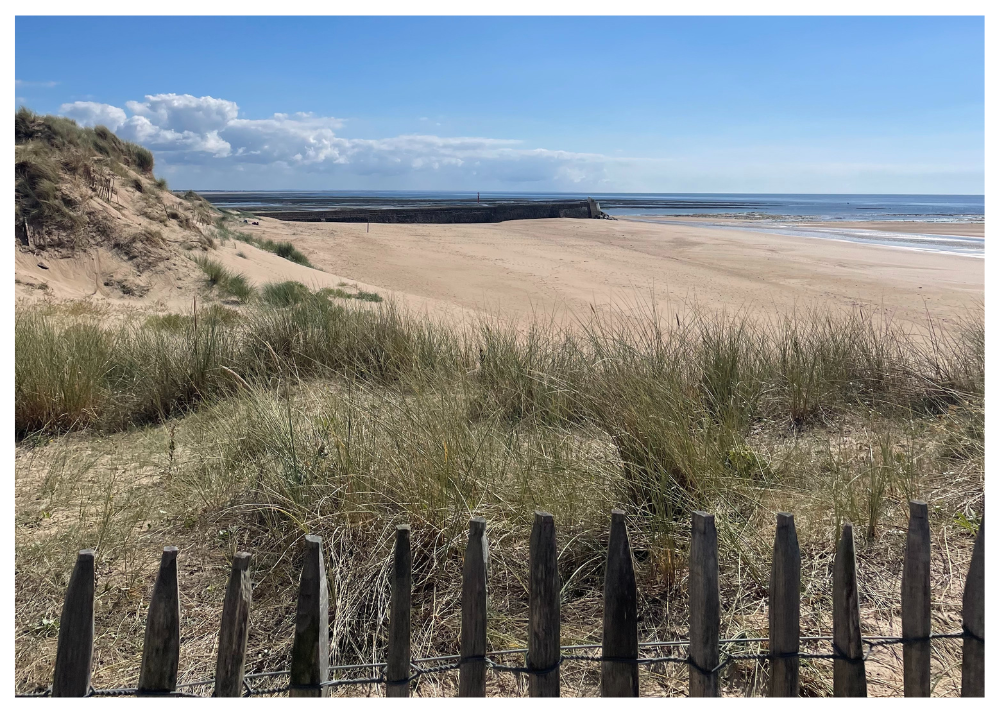
Regular, even waves keep rolling in and on an initiation lesson from Conrad, where he quickly gets us in the water, rather than delving into too much theory on the beach, I manage to stand on the board and ride a wave or two in. This beach is round the corner from the huge dunes and busy pleasure harbour (with a welcoming sailing club) of Barneville-Carteret, and we celebrate our various sporting achievements with a beach-front lunch at La Potinière. With the sun sparkling off the sea and the golden sand stretching for miles, it’s another surprise from Normandy, on a coastline that just keeps on giving and giving.
Feeling inspired?
Click the links below to learn more about France. Or reach out to our team of expert travel agents and plan your French escape today! Remember – every time you book a holiday with you can donate 5% of the price to the charity of your choice for free!
This is a feature from Issue 20 of Charitable Traveller.

















 by net effect
by net effect